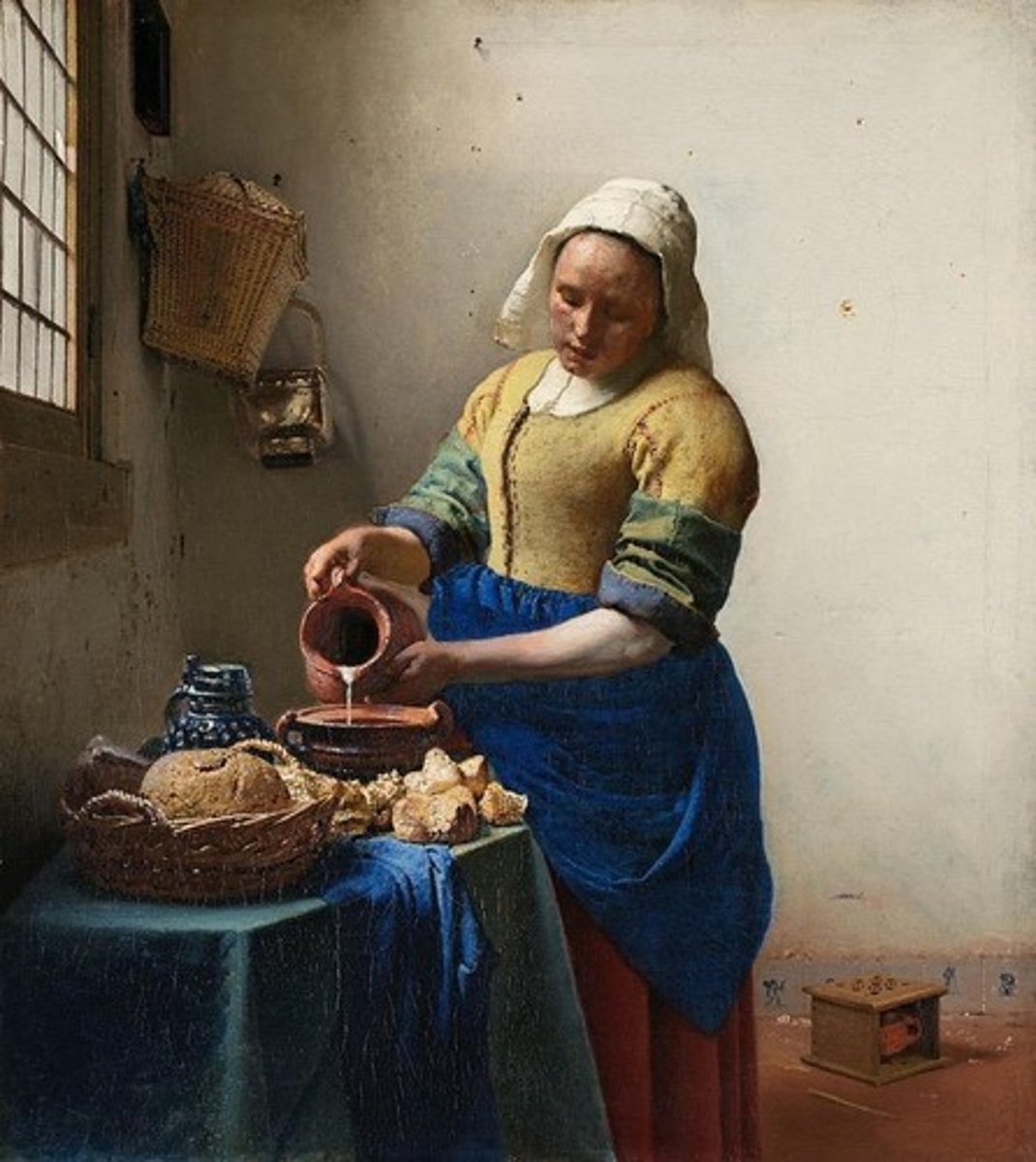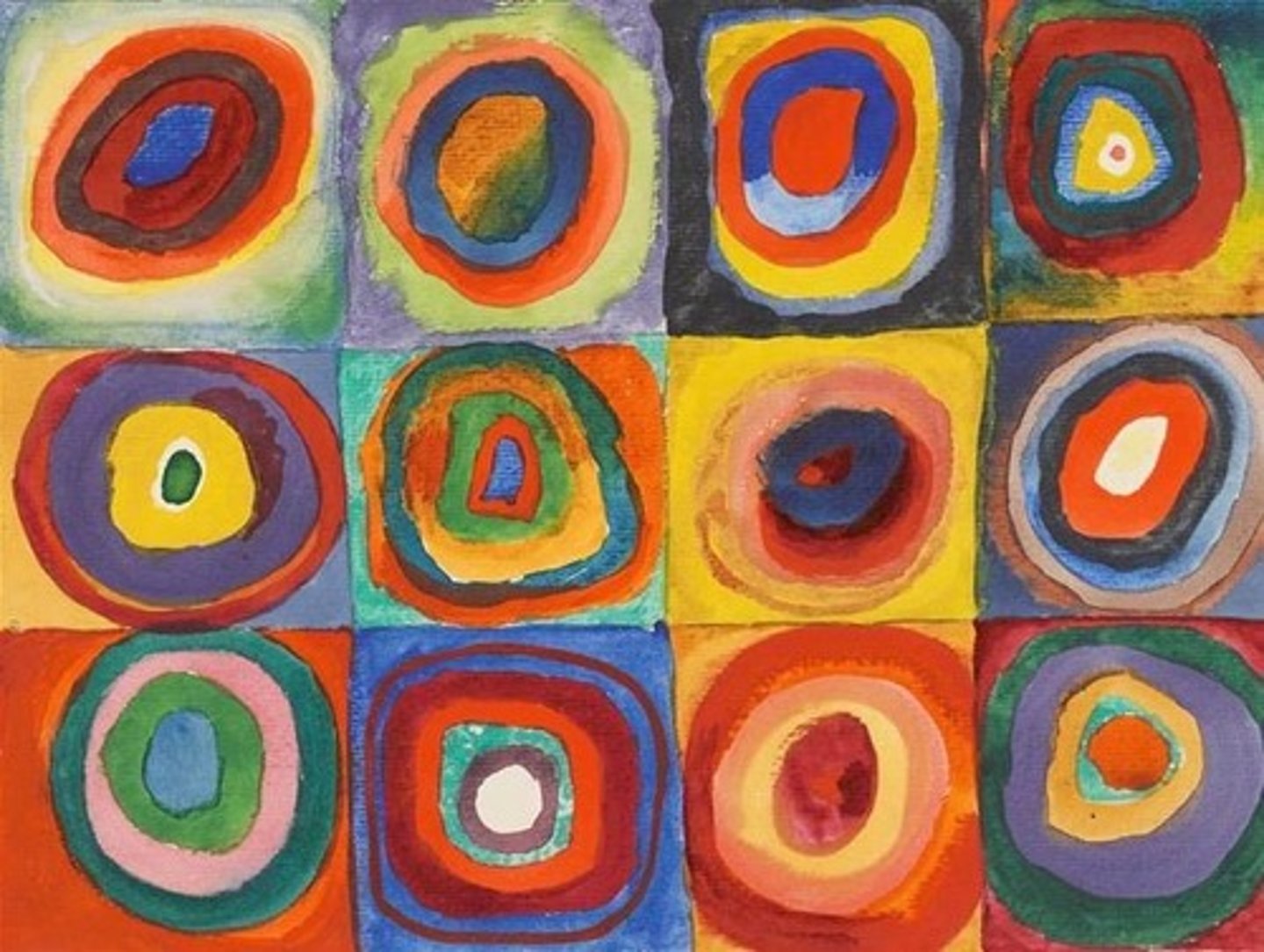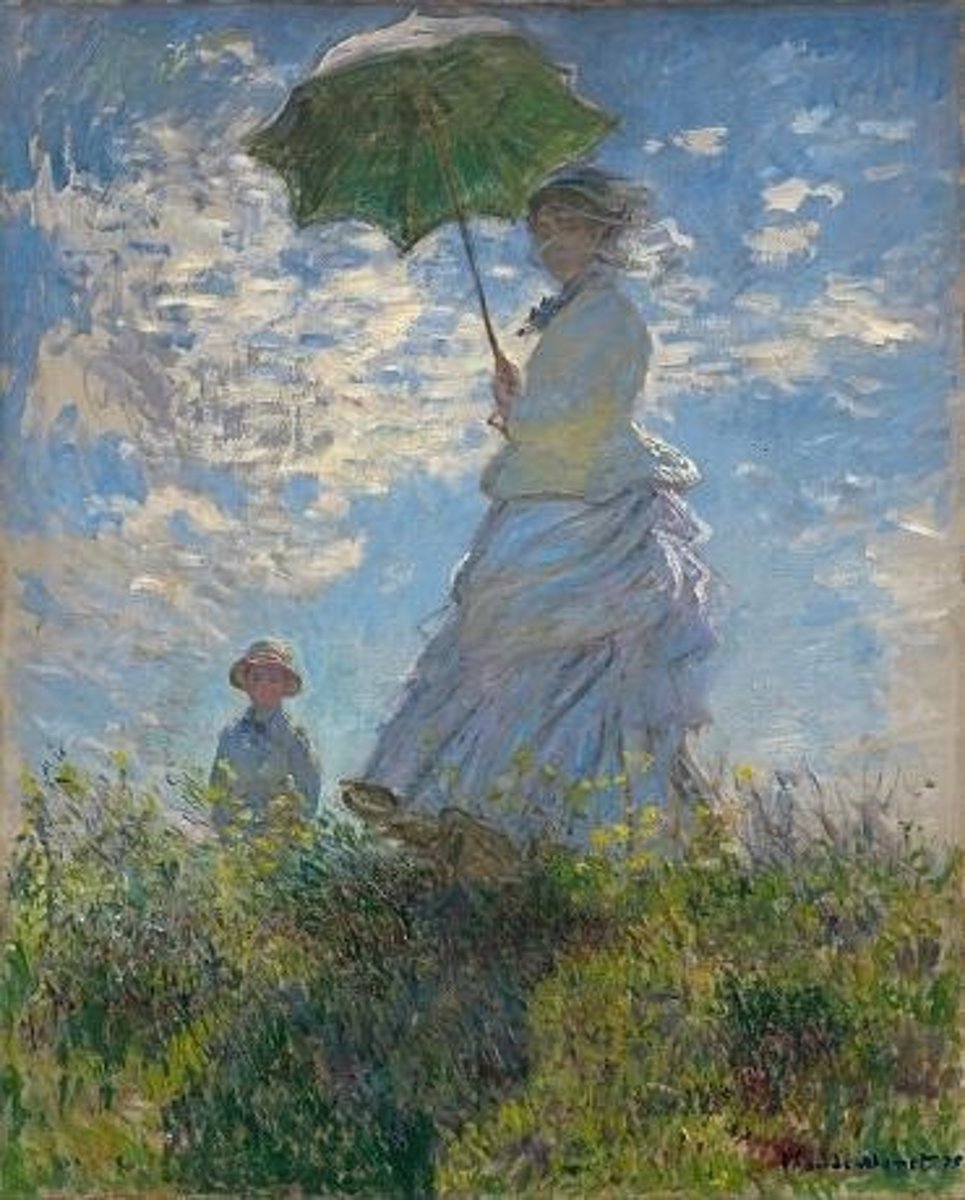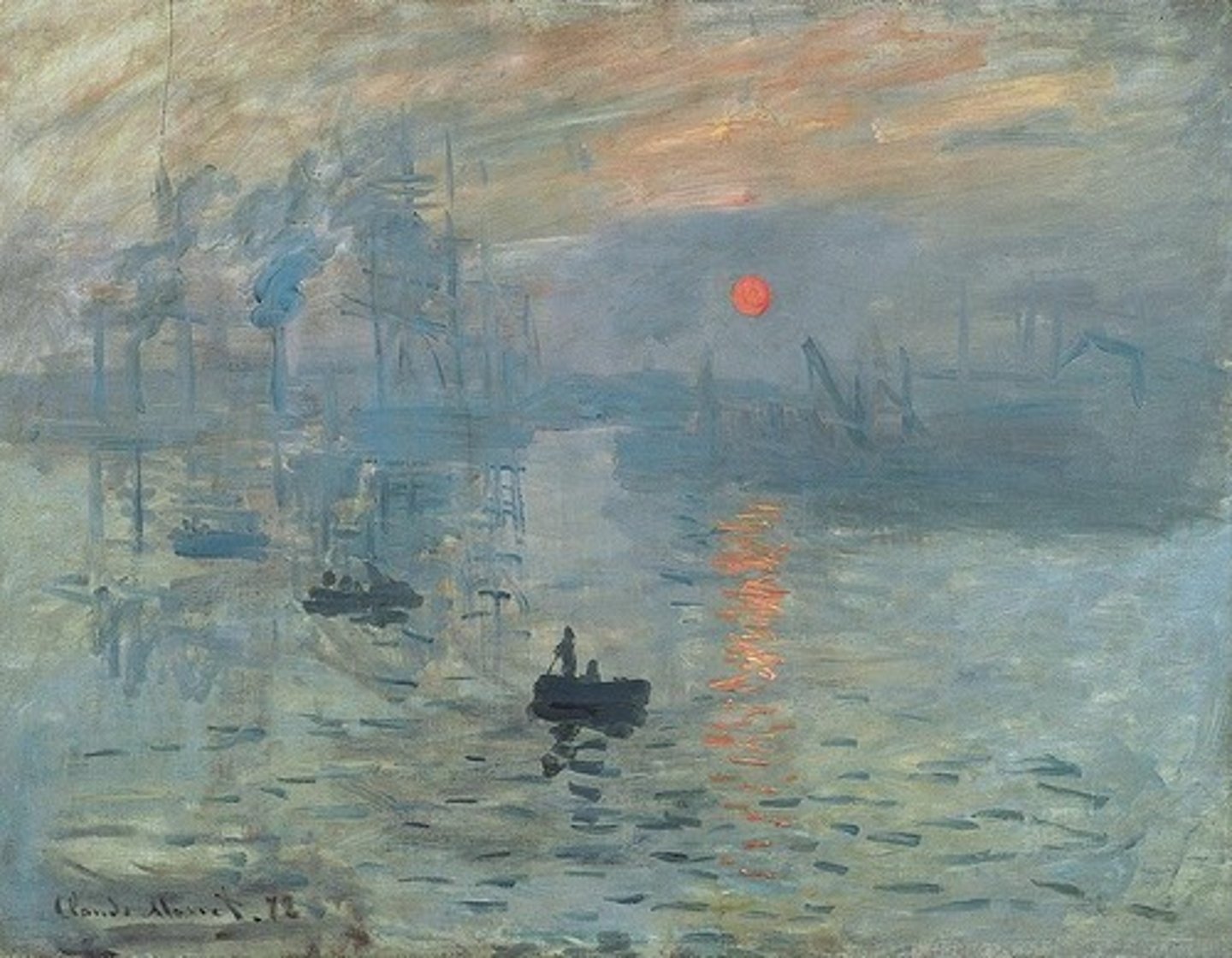Defining Art: Aesthetics and Philosophies
1/122
There's no tags or description
Looks like no tags are added yet.
Name | Mastery | Learn | Test | Matching | Spaced |
|---|
No study sessions yet.
123 Terms
Aesthetics
The branch of philosophy dealing with beauty, art, and artistic taste--the philosophy of art.
Mimesis
Mimesis = copying or imitation; art as representation or a convincing imitation of reality.
Mimetic or Imitational Theory
A theory that emphasizes art as a representation or imitation of reality.
Good Art Criteria
It is good art if it is beautiful, resembles reality, is captivating, expresses emotion, communicates a message, teaches us about culture or preserves cultural history, teaches us something else, shows us an interesting idea, contains an interesting design, shocks us, prompts us to take action, is controversial, is in a museum, is famous, other say it is good, or it just is.
Fine Art
Art created primarily for aesthetic value and intellectual stimulation rather than for a functional purpose.
Applied Art
Art that is created for a practical purpose, often with a focus on functionality.
Historical Context in Art
Understanding how the historical and cultural background impacts a visual work's content.
Cultural Context in Art
Examining how culture influences the creation and interpretation of visual art.
Artwork Spotlight: Bouguereau's Homer and His Guide
An oil on canvas painting created by William-Adolphe Bouguereau in 1874.
Franz Marc's Fate of the Animals
An artwork created in 1913 that prompts discussion on what makes it good.
Johannes Vermeer's The Milkmaid
A painting from c.1658 that is noted for its realistic depiction of the subject.

Wassily Kandinsky's Squares with Concentric Circles
An artwork from 1913 that raises questions about its aesthetic value.

Realism
An art movement that aims to represent subjects as they appear in everyday life.
Photo-Realism
An art movement that aims to create paintings that resemble high-resolution photographs.
Italian Renaissance
A period of great cultural change and achievement in art, literature, and science in Italy during the 14th to 17th centuries.
Dutch Golden Age
A period in the 17th century known for its wealth and cultural achievements, especially in painting.
Zeuxis and Parhassios
Rival painters from ancient Greece known for their competition in realism and representation in art.
Quote by Zeuxis
I have deceived the birds, but Parhassios has deceived Zeuxis.
Quote by Parhassios
The curtain was the painting.
Artistic Taste
The subjective preference and appreciation of art, which can vary widely among individuals.
Art in a Museum
Art that is recognized and preserved in a museum setting, often considered to have cultural or historical significance.
Controversial Art
Art that provokes strong reactions and debates, often challenging societal norms or values.
Trudy Tran
Natural Symmetry, 2022, Color pencil on paper.
Jennifer Emery
Tribute to the Military, 2022, Acrylic on canvas.
Julianna Wells
Portrait of Tony by the River, 2022, Oil on linen.
Franz Marc
Fate of the Animals, 1913, EXPRESSION.
Emotionalism Theory
Art as an expression of emotional content that draws a response from the viewer.
Associated Art Movements for Fate of the Animals
Expressionism, Propaganda.
Wassily Kandinsky
Squares with Concentric Circles, 1913, FORMAL.
Formalism Theory
Art as form, demonstrating effective use of the elements and principles of design.
Associated Art Movements for Squares with Concentric Circles
Abstract Expressionism, Cubism, Minimalism.
Süleiman the Magnificent
ca. 1555-60.
Fred Fussell
EL DORADO, 2022, Acrylic on canvas.
Harry Averett
Interplanar Chair, 2022, Forged and fabricated steel.
William-Adolphe Bouguereau
Homer and His Guide, 1874, Oil on canvas.
Content
The meaning or meanings associated with an artwork.
Context
The elements that influenced an artwork's creation or the artist, such as when and where the work was made.
Associated Art Movements/Style for Bouguereau
Academic Art, Neoclassicism, Realism.
Valued Genres Ranked for Bouguereau
1 - History, 2 - Portrait, 3 - Genre (daily life), 4 - Landscape, 5 - Still Lifes.
Impressionism
Developed in France during the 1860s-1880s, based on painting outdoors and spontaneously 'on the spot'.
Subjects of Impressionism
Landscapes, scenes of everyday life.
Jacques-Louis David
Napoleon Crossing the Alps, 1801-1805, Oil paint on canvas.
Movement for Bouguereau
Academic Art (Academicism), 1560-1900.
Important Influences for Bouguereau
European art academies, French Académie des Beaux-Arts, Neoclassicism, Romanticism.
Claude Monet
A French painter known for his role in the Impressionist movement.
Woman with a Parasol
A painting by Claude Monet created in 1875, using oil on canvas.

Photography
A medium that became prominent in 1839, influencing the development of Impressionism.
Light
A key element that Impressionists aimed to capture, representing the feeling of the outdoors.
Color
An essential aspect of Impressionist paintings, used to evoke emotions and sensations.
Texture via Brush Strokes
A technique used by Impressionists to create depth and interest in their paintings.
Haystacks (sunset)
A painting by Claude Monet created between 1890-1891, using oil on canvas.
Aesthetic Theories
Frameworks for understanding and evaluating art, including various philosophies.
Mimetic (Imitationalism)
An aesthetic theory that emphasizes imitation of reality in art.
Expressionism/Emotionalism
An aesthetic theory focused on conveying emotions and subjective experiences.
Formalism
An aesthetic theory that values the form and structure of art over content.
Utilitarian
An aesthetic theory emphasizing the utility or usefulness of art.
Communicative
An aesthetic theory that focuses on art as a medium for communicating messages or ideas.
Instrumentalism
An aesthetic theory that aims to inspire thought and action through art.
Institutionalism
An aesthetic theory that values art based on its validation by art institutions.
Minimalist
An aesthetic theory that emphasizes simplicity, usefulness, and clarity in art.
Conceptualism
An aesthetic theory that prioritizes the idea or message over the materials used in art.
Marcel Duchamp, Fountain
A 1917 artwork that challenges traditional definitions of art.
Avant-garde artists
Artists who test the limits of what is considered art.
Art Appreciation
The study of art, its context, and its meaning.
Impression, soleil levant (Impression, Sunrise)
A painting by Claude Monet created in 1872, using oil on canvas.

Water Lilies and Japanese Bridge
A painting by Claude Monet created between 1897-1899, using oil on canvas.
Boulevard Montmartre, Mardi Gras
A painting by Camille Pissarro created in 1897, using oil on canvas.
Boulevard Saint-Germain
An albumen print by Charles Marville created between 1875-1877.
What is Art?
The term 'art' originates from the Latin word ars, meaning 'skill' or 'craft.'
Jeff ***** - Play-Doh
A work created between 1994-2014 using polychromed aluminium, measuring 124 x 152¼ x 137 in (315 x 386.7 x 348 cm).
Art in Museums
It's art if it's in an art museum.
Famous Artists
It's art if it's made by someone famous.
Monetary Value
It's art if it's worth a lot of money.
Three-Dimensional Art
Art can be three-dimensional (3D), like sculptures and ceramics.
Art as Documentation
Art can document and tell stories.
Art as a Moment
Art can document a moment in time.
Recreating Moments
Art can recreate a previous work/moment.
Art as Experience
Art can be gazed upon.
Art as Consumption
Art can be eaten.
Art as Location
Art may be up or down.
Dramatic Art
Art can be dramatic.
Holy Art
Art can be Holy.
Changing Ideals of Beauty
Art demonstrates how ideals of beauty change over time.
Contemporary Ideals of Beauty
Art demonstrates ideals of beauty within our own time.
Art Telling Stories
Art tells stories.
Art Changes Over Time
ART changes over time.
Cultural Variability of Art
Defining art is a challenge because the definition of art varies by culture, region, and time period.
Art
An expression, involving skill, imagination, and media, that moves ideas from the mind into the world.
Romanticism
An art movement in the 18th century that emphasized beauty and the expression of the artist's emotions, reacting against the Enlightenment's focus on science and rational thought.
Avant-Garde
Art that is new, different, exploratory, and ahead of its time.
Fountain
A work by Marcel Duchamp designed as a prank to poke fun at the institution of American avant-garde art, changing the definition of art forever.
Readymades
Artworks created from found objects, exemplified by Marcel Duchamp's Fountain.
Dadaism
An art movement that emerged in the early 20th century, known for its avant-garde approach and rejection of traditional aesthetics.
Social Realism
A branch of realism that focuses on social issues and the lives of everyday people.
Judith Leyster
A Dutch painter known for her skillful self-portraits during the Dutch Golden Age.
Caspar David Friedrich
A German Romantic painter known for his landscapes that glorified nature and spirituality.
Gustave Courbet
A French painter who led the Realism movement and focused on depicting everyday life.
Hubert von Herkomer
A painter known for his works that depicted social issues and the struggles of the working class.
Marcel Duchamp
An artist known for his role in the Dada movement and for creating the concept of readymades.
Bicycle Wheel
A work by Marcel Duchamp that exemplifies the readymade concept, created in 1951.